PT. Putranata Adi Mandiri merupakan perusahaan di Indonesia yang bergerak dibidang Conditioning Monitoring untuk kebutuhan Industri dan Manufactur. Sebagai agen flir spectro acoem indonesia, untuk menunjang kebutuhan-kebutuhan tersebut PT. Putranata Adi Mandiri mengageni alat-alat yang dibutuhkan. Adapun alat-alat yang di ageni adalah yang telah memiliki nama dan terkenal di dunia sehingga kualitas dan kehandalan yang sudah diakui dunia. Service / Jasa Balancing, Alignment, Thermography, Training dan Sertifikasi Local dan Internasional. Peralatan yang dibutuhkan untuk dapat memenuhi kebutuhan dari kegiatan Reliability merupakan faktor utama dari suksesnya suatu kegiatan perencanaan Reliabiltiy, kami dapat memberikan dukungan tersebut dengan peralatan dan pengalaman kami dalam kegiatan Reliability.
Training penggunaan alat sampai bisa dan training ulang untuk perusahaan yang personilnya telah berganti adalah salah satu kelebihan after sales kami. Untuk mendukung Customer kami agen flir spectro acoem selain menjual dan menyediakan alat-alat dan teknisi serta engineer yang bersertifikat, untuk Jasa / Service untuk On site Balancing, Jasa / Service untuk Workshop Balancing, Jasa / Service untuk Analisa Vibrasi,Jasa / Service untuk Laser Shaft Alignment, Jasa / Service untuk Industrial Alignment, Jasa / Service untuk Thermography.
![]() ME’scope adalah serangkaian paket dan opsi perangkat lunak yang membuatnya lebih mudah bagi Anda untuk mengolah data kebisingan & getaran eksperimental, menganalisis dan menampilkan data dalam animasi. ME’scope membantu Anda memecahkan berbagai masalah getaran & akustik-vibro. Dengan opsi lingkup ME yang baru, Anda juga dapat memantau mesin dan struktur selama periode waktu yang lama, dan diberi tahu ketika tingkat getaran atau kebisingan telah melampaui tingkat yang ditentukan.
ME’scope adalah serangkaian paket dan opsi perangkat lunak yang membuatnya lebih mudah bagi Anda untuk mengolah data kebisingan & getaran eksperimental, menganalisis dan menampilkan data dalam animasi. ME’scope membantu Anda memecahkan berbagai masalah getaran & akustik-vibro. Dengan opsi lingkup ME yang baru, Anda juga dapat memantau mesin dan struktur selama periode waktu yang lama, dan diberi tahu ketika tingkat getaran atau kebisingan telah melampaui tingkat yang ditentukan.
The InfraCal 2 Biodiesel Blend Analyzer for measuring percent biodiesel in diesel is the ideal solution where a quick, accurate, on-site measurement is required and a single, repetitive biodiesel blend analysis is needed. The InfraCal 2 ATR-B is based on proven IR technology, originally developed by Wilks, and used by fuel distributors, blenders, producers and regulatory agencies worldwide. The compact, easy-to-use Biodiesel Blend Analyzer has a measurement range of 0 – 100% biodiesel in diesel. These results are comparable to both ASTM D7371 and EN 14078, laboratory methods that require expensive FTIR Spectrometers.
Samples are applied to a zinc selenide attenuated total reflectance (ATR) sample plate for immediate results. The analysis can be done by non-technical personnel with no formal training and is ideal for lab or field use. The InfraCal2 ATR-B has a touch screen display, internal data storage and transfer, a multi-language interface and password protected settings. The internal battery pack allows for portability and up to 6 hours continuous use, providing results in under a minute at a fuel loading rack, in a laboratory or at a pump in a fueling station.
Specifications
| Item | Specifications |
| Analytical Wavelength/Wave Number | 5.7 µm, 1745 cm-1 |
| Power Requirements | 18 volts DC, 3.3 amps, internal battery pack |
| Power Supply | Universal AC/DC provided |
| Weight | 5.8 lb. (2.6 kg) with battery -7.0 lbs (3.2 kg) |
| Dimensions | |
| Suggested Operating Range | 5°C – 40°C |
| Measurement Range | 0 – 100% Biodiesel in Diesel |
| Analysis Time | Less than 30 seconds |
| Instrument Repeatability | 0 – 30%±0.2%, 20 – 100%±1% of biodiesel (FAME) concentration |
| Communication Port | USB, RS 232 |
Bearing defects include wear and tear on any part of a bearing. This can mean abrasion, pressure damage, fluting, and corrosion. These issues typically occur as a result of another underlying machine fault such as misalignment or poor installation.
The Fix:
1. Shutdown and lockout.
2. Remove the bearing.
3. Perform bearing failure analysis.
4. Inspect and measure shaft and house fits for wear.
Cavitation is when cavities (low pressure vapor bubbles) form in the liquid on the suction side of the pump. When these cavities get into the impeller section, pressure balances and they often implode into the impeller surface.
The Fix:
1. Check and record suction, discharge pressure, and flow.
2. Compare these values to the original specifications and BEP of the pump curve.
3. Check for flow restrictions such as improperly positioned valves or tank levels.
4. Check fluid for proper viscosity.
5. Shutdown and lockout.
6. Check the impeller and volute for wear or blockages.
7. Make repairs or corrections as needed.
Gear Wear involves removal or displacement of material on the surface of the gear teeth due to mechanical, chemical, or electrical action. The three major types of wear are adhesion, abrasion, and polishing. Common causes of gear wear are misalignment or insufficient lubrication.
The fix
1. Perform lubrication analysis.
2. Shutdown and lockout.
3. Inspect the gear tooth running pattern for wear and proper alignment.
4. Repair/correct as needed.
5 Retake vibration readings and analyze.
Misalignment occurs when the shaft centerlines of the driver and driven machine(s) are not aligned in the vertical and horizontal planes. This is common after replacing machinery improperly.
The Fix
1. Shutdown and lockout.
2. Check for loose fasteners and foundation deterioration.
3. Inspect coupling for wear and proper maintenance.
4. Perform a precision alignment.
Structural resonance is the excessive vibration of a component such as a machine base or supporting structures. This is caused by the natural frequency coinciding with a forcing frequency. Resonance can be challenging to correct particularly if there have been changes in a machine’s operation.
The fix
1. Determine if there has been a change in the machine’s operation since installation.
2. Check the machine for its structure and connections such as pipes, stiffening brackets, and ductwork for looseness or deterioration.
3. Repair/correct as necessary.
4. Retake vibration readings and analyze.
Unbalance is the uneven distribution of mass around a rotating axis. Common causes of unbalance are buildup from foreign matter (dirt, paint, rust), broken blades or vanes, and missing fasteners in the rotating element.
The fix:
1. Shutdown and lockout.
2. Check for loose fasteners and foundation deterioration.
3. If present, check vibration isolator condition.
4. Inspect rotating components for cleanliness, wear, and debris build up.
5. Repair/correct as necessary.
6. Retake vibration readings and analyze.
7. If vibration readings are still high, schedule for field balance.
The Augmented Mechanics ecosystem is a combination of mobile applications, connected wireless sensors and cloud-based software that together form a virtual protective ring around your machinery’s rotating equipment.
6 apps that connect with wireless sensors are now integrated in this ecosystem:
RT-300 is the first product combination resulting from this ecosystem available on the market.
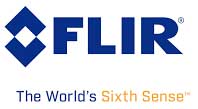 PT. Putranata Adi Mandiri sebagai Agen Flir di Indonesia yang melayani Sales, Support dan After Sales dengan didukung oleh sales, engineer yang berpengalaman dan bersertifikat, untuk kenyamanan pelanggan kami.
PT. Putranata Adi Mandiri sebagai Agen Flir di Indonesia yang melayani Sales, Support dan After Sales dengan didukung oleh sales, engineer yang berpengalaman dan bersertifikat, untuk kenyamanan pelanggan kami.
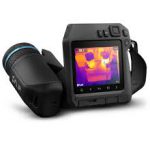
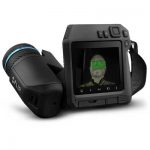
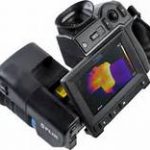
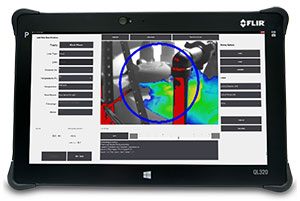
The QL320 is a quantitative optical gas imaging (QOGI) system that allows surveyors to measure the leak rates for methane and other hydrocarbons. This eliminates the need for secondary sampling with a toxic vapor analyzer or similar tool. In addition, the QL320 does not require close contact with the gas in order to measure emission rates, making it a safer solution for quantifying difficult-to-measure gas leaks.
With the FLIR QL320, you can determine mass leak rates (g/h, lb/h, MT/h), volumetric leak rates (cc/min, L/min, or SCFH), or concentration (ppm-m) for most hydrocarbon gases. Measure the size of fugitive emissions from safe distances, as far as 100 feet.
The FLIR QL320 has the built-in tools needed to validate leak surveys, plus a Δ temperature screening tool to determine suitablility of background conditions. In-field reporting includes archiving of measurements, colorized video and raw data for analysis and post-processing.
Used with a FLIR OGI camera’s Q-Mode, the QL320 gathers relative information in the camera and post-processes the data for quantified results without the need to tether directly to the camera.
Begin screening quickly with limited ramp-up time, simple video connectivity, and choice of >4-hour battery or external power.
Optimal screening accuracy with automatic ambient drift compensation, visual pass/fail graphic indicators, and audible alarms.
On-camera FLIR Screen-EST Mode does not store images or personal information and allows for social distancing in screening setups.
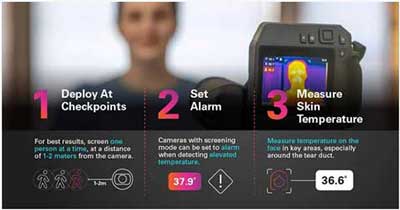
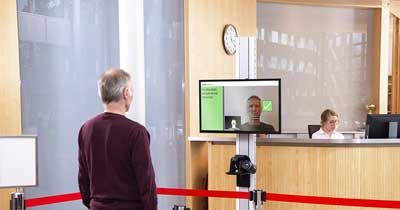
The FLIR T540-EST handheld thermal camera is a non-contact screening tools that serve as a first line of defense against potential health risks. This 464 × 348 pixel resolution FLIR EST™ thermal screening solution detects and visualizes heat to quickly identify individuals with an elevated skin temperature. Battery-powered and featuring an integrated touchscreen display, the T540-EST sets up quickly and easily for operation in temporary or mobile screening settings. The on-camera FLIR Screen-EST Mode offers visual positioning guides, automatic sampling to maintain an updated temperature average, and graphic pass/fail indicators for results, reducing the burden on screening station operators. Compatibility with FLIR Screen-EST Desktop software, an integrated tripod mount, and external power makes this camera a good fit for permanent installations.
The FLIR T560-EST handheld thermal camera is a non-contact screening tool that serves as a first line of defense against potential health risks. This FLIR EST™ thermal screening solution detects and visualizes heat to quickly identify individuals with an elevated skin temperature. Battery-powered and featuring an integrated touchscreen display, the T560-EST sets up quickly and easily for operation in temporary or mobile screening settings. The on-camera FLIR Screen-EST Mode offers visual positioning guides, automatic sampling to maintain an updated temperature average, and graphic pass/fail indicators for results, reducing the burden on screening station operators. A 640 × 480 pixel detector offers the highest thermal resolution in this line of handheld FLIR EST cameras, for superior measurement accuracy. Compatibility with FLIR Screen-EST Desktop software makes this camera a good fit for permanent installations as well.
Quickly screen passengers, customers, or employees for signs of elevated skin temperature with this turnkey solution. The FLIR EST Kiosk combines the temperature measurement capabilities of a thermal imaging camera plus FLIR Screen-EST™ software with the convenience of a tablet display and floor stand. This kiosk sets up in minutes, offering fully automated, self-service screening that targets the inner canthus (corner of the eye) for accurate skin temperature measurement.

Industry’s leading supplier of on-site oil analysis equipment, delivering real-time results and improving ROI for Reliability and CBM programs worldwide.
[carousel_slide id=’164′]
PT. Putranata Adi Mandiri
Grand Slipi Tower 43rd floor
Jl. Letjend S.Parman Kav.22-24
Jakarta 11480
Telp. +6221 29022588